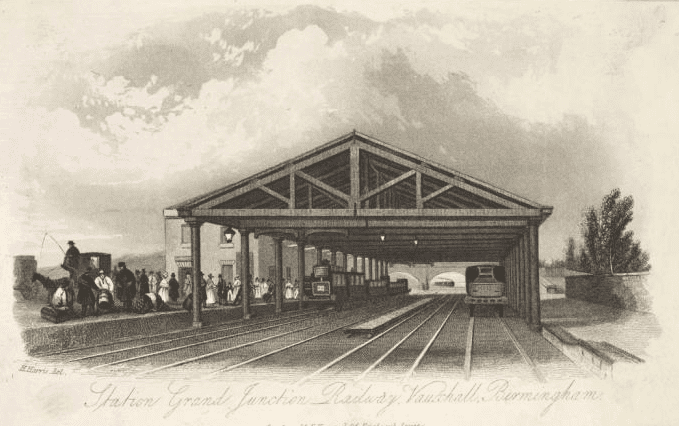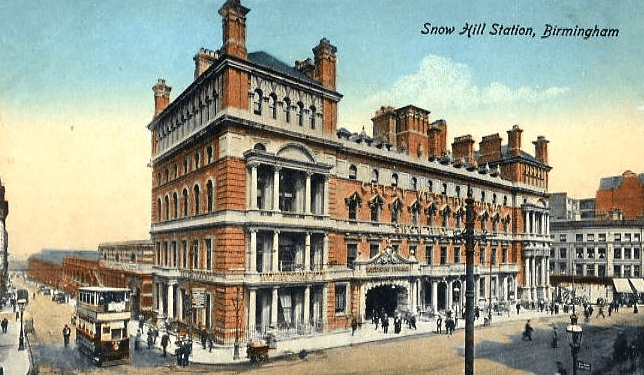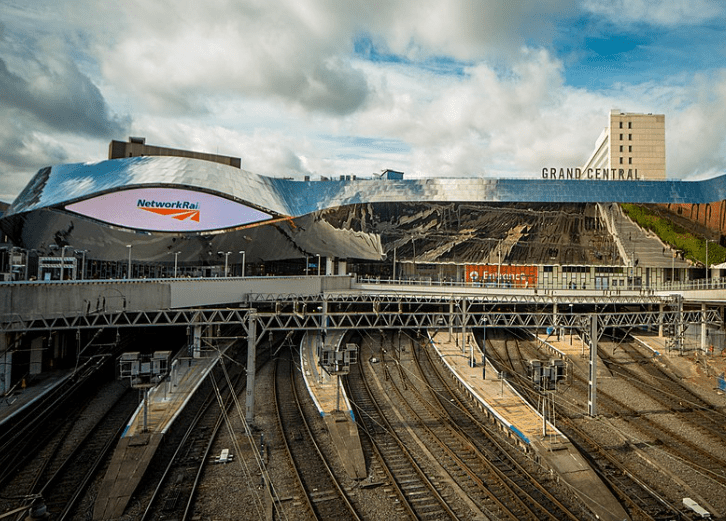Birmingham has become a perfect transport hub because of its geographical location. Dozens of routes to different parts of the country run through this city. It has a motor, water and, of course, railway connections. The development of the railway has become a significant event for many countries and cities. The first railway station in Birmingham appeared in the first half of the 19th century. Learn more at birmingham-future.
Temporary measures
Initially, the first Vauxhall railway station wasn’t intended for long-term operation. It was an old building with a stretched roof, which served as a sad end of the Grand Junction Railroad. The second station, Birmingham Curzon Street, was opened a year later, in 1838. Thus, Vauxhall became the terminus for freight trains and Birmingham Curzon Street for passenger ones.
The construction of the second station was taken more seriously. Its architect was Philip Hardwick. The building was perfectly designed. It continues its excellent operation in the 21st century and is considered one of the oldest stations. The station was closed in 1966.

Another station, Birmingham New Street, was opened in 1854. Birmingham Curzon station became a freight one as it happened with its predecessor. In addition, an unusual tourist zone was created there.
Birmingham New Street helped to reduce the load on the city’s congested railway. However, those measures turned out insufficient at the end of the 19th century. The pace of railway transportation increased and people changed routes to make them more profitable. Therefore, some of the routes began to run through Birmingham.
Snow Hill Station
Snow Hill became another major station on Livery Street. It was opened in 1852. Snow Hill was an intermediate station between London Paddington and Wolverhampton Low Level. It was rebuilt and adjusted for long-distance routes in 1871. There were other stations on the line that passed through Snow Hill. However, they couldn’t cope with the increasing load. Therefore, Birmingham Moor Street station was opened in 1909 to unload Snow Hill. It became the terminus of the North Warwickshire Line. The station had been closed from 1968 to 1987 and then it was restored. Later, Snow Hill was closed because the line load decreased and the station was no longer needed. In 1977, it was almost completely demolished and a new modern station was built instead.
Some stations were just abandoned. Birmingham Moor Street station was relocated in 1986. In 2002, its old building housed a shopping mall.
For a long time, Birmingham has been the largest railway city in the country. A new connection to the suburb of Harborne was opened in the city in 1875. However, it stopped operating soon. The railway began to decline due to the increasing popularity of buses. The situation worsened because of the busy New Street station, which often delayed trains. On the contrary, bus connections didn’t face such a problem. That‘s how railway imperfections led to the increasing popularity of buses, which in turn caused the decline of the railway.

In the 1930s, Birmingham railway stations were being closed one by one. In 1963, Icknield Port Road station was finally closed even for freight trains. However, at the same time, new stations and branches continued to open. The Cross-City Line and the London and North Western Railway Line were among them. The latter connected Sutton Coldfield and the centre of Birmingham. There were no direct trains from Sutton Coldfield to Birmingham until 1974.
The Birmingham railway was being constantly modernised and changed. Old passenger lines were converted into freight lines running around the city centre.
Reconstruction and investments
New Street station became a hub for almost all railway lines. In addition, it is a major junction of the entire British railway network. Therefore, a lot of money (£500 million) was invested in the reconstruction of New Street. Its renovation project was focused on two basic aspects, creating the best conditions for passengers and a large passenger capacity. The renovation of its lobby was finished in 2015.
In addition to the reconstruction of the station, the city continued the development of the lines in general. In particular, specialists worked on the railway connection between London and Birmingham as well as high-speed lines to Lindsey and Manchester. However, high-speed trains require special conditions at stations, and New Street wasn’t the one. Therefore, it was decided to build a new station on Curzon Street, on the site of the former Moor Street station, which would be able to serve high-speed trains. The Birmingham Interchange was intended to connect the city’s airport and the National Exhibition Centre.

In the end, it’s a success!
West Midlands Trains operates the whole railway network in Birmingham and across the county. Hard times for local railways have passed long ago, and today, Birmingham can boast of the busiest railway network. More than 50 million passengers were transported by this type of transport in the period from 2014 to 2015. It was surpassed only by the UK capital. In 2001, railways accounted for only 17% of all passenger transport, and in 2012, the number increased to 27%. It was especially loaded during rush hour. Many Birmingham residents continue to prefer trains over other types of public transport. In the past, trains were often late because of the small passenger capacity of the stations. So, people preferred buses. However, everything has changed since then. Nowadays, trains have become a more convenient and profitable type of transport because of traffic jams on the city roads.
Most city routes continue to run through New Street station. Suburban routes run along the Snow Hill Line passing through Snow Hill and Moor Street stations.
Transportation companies plan to revive old or abandoned freight stations. In particular, the city wants to restore stations on the Camp Hill Line.